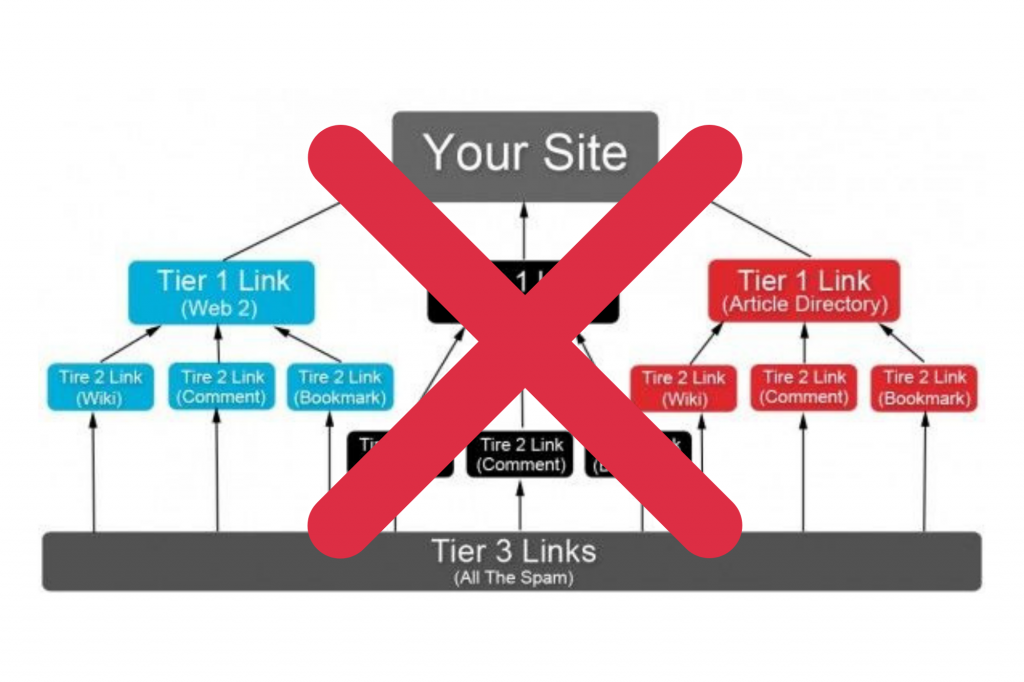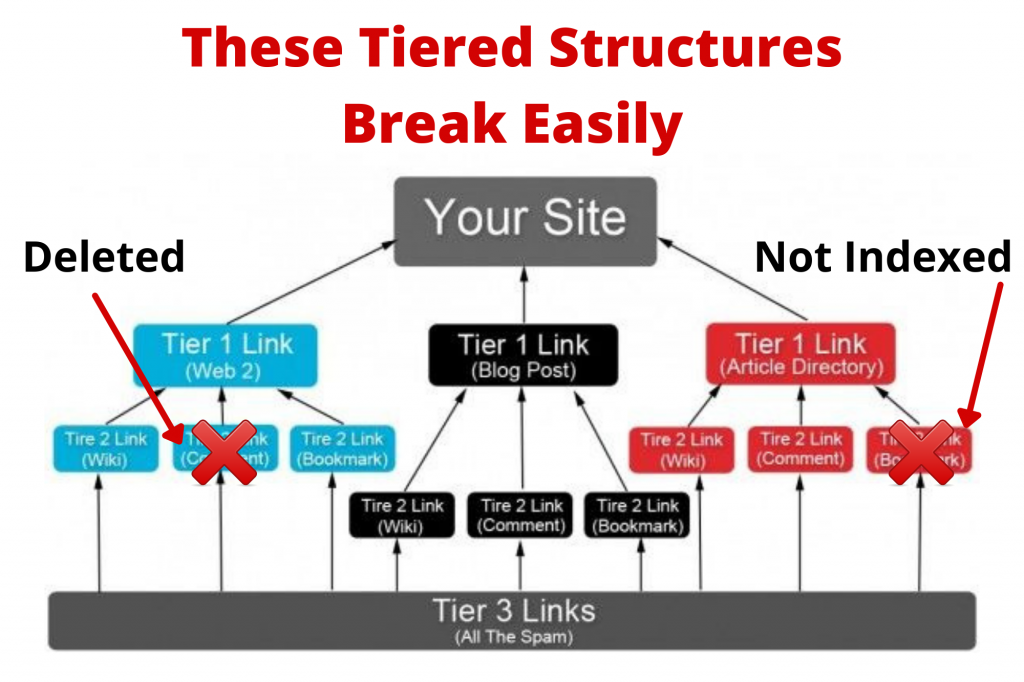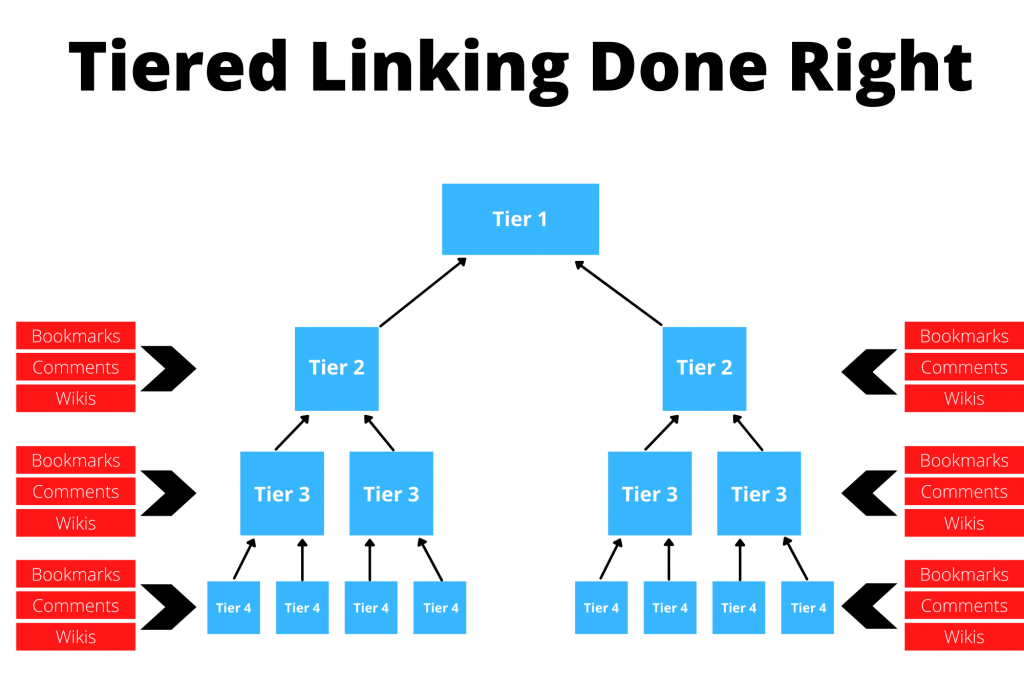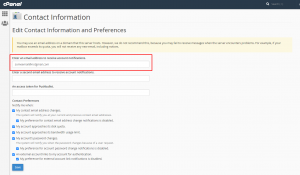Tiered linking might be a little more of a grey/black hat area for most of you, but not everything has to be white hat on your own projects (definitely should be for customers). For 15+ years most of the gurus out there have been teaching tiered linking completely wrong. Everyone from Matthew Woodward to the guys behind SENuke have been advocating the wrong structures for tiered linking. Even recently, SEO Powersuite published an article on their site doing it wrong. (They changed their article after I called them out on it. Lol.)
Basically everyone on Fiverr or any other marketplace you go to are doing tiered linking in a way that makes it highly inefficient and likely to not work at all.
The common way tiered linking is shown is to create somewhere around 4-6 sites on tier 1 which then link to your target page. Tier 1 typically consists of Web 2.0 sites or other decent quality pages that you have a good bit of control over.

Tier 2 will then usually either consist of a bunch of Web 2.0 sites or just plain spam (bookmarks, blog comments, forum comments, wikis, etc.).
Then tier 3 is more spam.
There are two problems with this structure. First of all, when you put a bunch of sites on tier 2, you are greatly diluting everything that comes behind it. Let’s say you put 20 Web 2.0s on tier 2. Then you create 1,000 links on tier 3. Great, but really you are only pointing 50 links at each tier 2 property, and considering that you are using low quality links, 50 is not going to move the needle at all.
(To be honest, with these sorts of links, even 50,000 links are not going to move the needle much, if at all. You need to think bigger.)
But the really significant problem is that your low quality links should never be a part of the actual tiered structure. Things like blog comments and wikis get deleted frequently. Social bookmarks often do not get indexed by search engines.

Any type of break in the structure means that any links flowing to that point are now lost.
The way tiered linking should be done is to keep your actual tiers small and make them sites you have control over. Either domains that you own or Web 2.0s (you technically don’t have control over a Web 2.0, but it is unlikely to be taken away from you unless you do something stupid with it).

Tier 1, should be one site which then links to your money page.
Tier 2, 2 sites.
Tier 3, 4 sites.
Tier 4 (if you want to go that far), 8 sites.
That’s it.
No bookmarks. No blog comments. None of that junk goes into the tiers. Then you take all your low quality links that you want to use and you point those at the sites in the tiers.
What this means is that if a blog comment link gets deleted, it’s not destroying everything in the structure behind it. It doesn’t matter. You are unlikely to ever lose anything that appears in the actual tiered structure.







